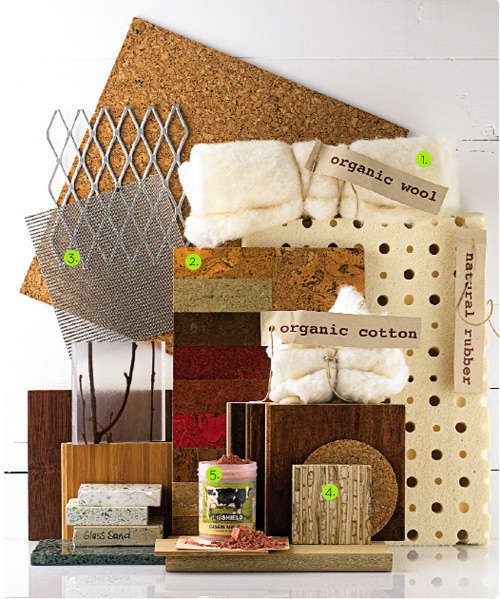Green Building: The Materials
The green building market is expected to grow from $7.6 billion in 2006 to $39 billion in 2010, according to Barron’s, making it one of the hottest segments of luxury housing. Water, heat and heavy traffic are all factors in deciding the right surfaces and appliances. EnergyStar appliances are a no-brainer—these help the environment and your energy bill—but there are other ways to incorporate sustainable materials into your home. Timber certified by the Forestry Stewardship Council guarantees the wood is obtained from well-managed forests grown under strict environmental standards. Seeking out recycled materials gives new life to old pieces. Obtaining items from local suppliers reduces the amount of energy spent hauling heavy items long distances. Here, Smith Dalia Architects shares examples of the right sustainable materials for your space.

(1) Natural fibers such as wool, cotton and rubber are durable, chemical-free options for window treatments, table linens, chair cushions and floor coverings.
(2) Cork is sustainably harvested from Mediterranean forests. Perfect for flooring, wall panels and cabinetry, cork tiles are easy to get through a designer.
(3) Seeking out recycled materials gives new life, character and age to old pieces. Recycled plastics, metals, tiles and glass become chic countertop and cabinetry options in the kitchen.
(4) Rapidly renewable resources (materials that replenish themselves naturally and quickly), such as fast-growing bamboo, provide good-looking, tough and durable options for flooring, cabinetry and other surfaces, and they help ensure that deforestation is minimized.
(5) Conventional paints are manufactured using loads of synthetic chemicals. One of the hazards is a high-VOC (volatile organic compound) rating. Many of these chemicals and compounds stay in rooms for years, emitting toxins that are easily absorbed into the body. Natural paints like milk paint and paints with low-VOCs are easy to find and ensure that your walls are not chemically closing in on you.
For more green building sources, visit smithdalia.com, buildinggreen.com and greenhomebuilding.com.





